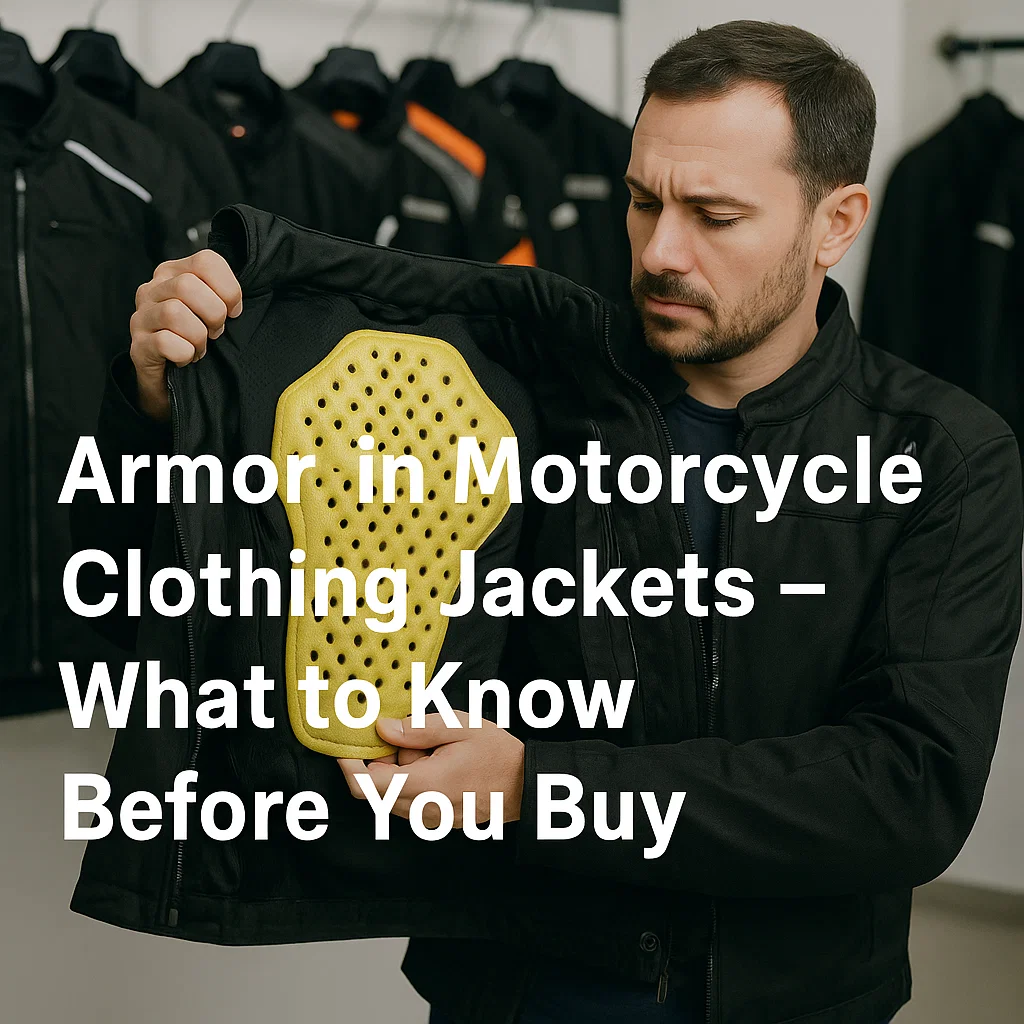Armor in Motorcycle Clothing Jackets – What to Know Before You Buy

Whether you’re a seasoned rider or a weekend warrior just starting out, investing in high-quality motorcycle clothing jackets is one of the smartest moves you can make. But not all jackets are created equal—and if you’re prioritizing safety (which you absolutely should), then armor is the feature you need to understand before making a purchase.
In this guide, we’ll break down what motorcycle armor actually does, the different types available, the safety certifications you should look out for, and how to choose a jacket that keeps you protected without sacrificing comfort or style.
Why Armor Matters in Motorcycle Clothing Jackets
Let’s start with the basics. Motorcycle armor is designed to absorb and dissipate the energy from impacts during a crash, helping to reduce injuries to vital areas like your back, shoulders, elbows, and chest. While your helmet protects your head, the armor in your jacket plays a crucial role in protecting your upper body.
According to the National Highway Traffic Safety Administration (NHTSA), upper extremity injuries are among the most common in motorcycle accidents. Jackets with integrated armor can make a serious difference in minimizing those risks.
Types of Armor in Motorcycle Jackets
Not all armor is the same. Here’s a breakdown of the most common types you’ll encounter when shopping for motorcycle clothing jackets:
1. Back Armor
Back protectors are usually placed in a dedicated pocket inside the jacket or sold separately. They come in full-coverage or segmented designs, offering different levels of protection and flexibility.
2. Shoulder and Elbow Armor
These are typically included in most motorcycle jackets. Since shoulders and elbows often take the brunt of a slide, it’s vital that the armor here is high-quality and securely fitted.
3. Chest Armor
Less common but increasingly popular, chest protectors guard the ribs and sternum. Some jackets have built-in compartments for chest inserts or come with them included.
4. Integrated vs. Removable Armor
Some jackets have armor stitched in, while others feature removable inserts. Removable armor allows for easier washing and flexibility if you want to upgrade your protection later on.
Understanding CE Safety Ratings
When it comes to armor, certifications matter. CE (Conformité Européene) ratings are the European safety standard for motorcycle protective gear, and they’re recognized worldwide.
Here’s a quick overview:
- CE Level 1: Offers basic protection and is suitable for casual or urban riding. It absorbs less impact energy but still meets the minimum requirement.
- CE Level 2: Provides higher protection, often preferred for highway and aggressive riding. Level 2 armor absorbs more impact and is typically thicker or made with advanced materials.
Always check if the armor in your motorcycle clothing jacket is CE-rated and what level it meets. A quality jacket should indicate this clearly on the label or product description.
Materials Used in Motorcycle Armor
The effectiveness of armor depends not only on its placement and certification but also on the materials used. Some of the most common include:
- Viscoelastic Foam: This soft, flexible material hardens upon impact to disperse energy.
- Thermoplastic Elastomers (TPE): Durable and resistant to wear and tear.
- Polyurethane: Often used for its ability to compress and absorb shock.
Each material has its pros and cons in terms of weight, flexibility, and breathability. Riders who want freedom of movement may prefer D3O or similar armor known for its flexibility and impact resistance.
Jacket Fit & Armor Placement: Getting It Right
Even the best armor won’t protect you properly if it’s out of place. A snug but comfortable fit is essential to ensure the armor stays in the right spot while riding—and especially in the event of a crash.
When trying on a motorcycle clothing jacket:
- Make sure the armor covers the intended areas completely.
- Move around—raise your arms, turn your torso, and sit as if you’re on your bike—to see if the armor shifts.
- Look for adjustable armor pockets or straps that let you fine-tune the positioning.
Some premium jackets even feature modular armor systems or zip-in liners for a customizable fit.
Features to Look For in an Armored Motorcycle Jacket
When shopping for motorcycle clothing jackets, keep these features in mind:
- CE-rated armor at key impact zones (shoulders, elbows, back)
- Abrasion-resistant outer materials (Cordura, leather, Kevlar)
- Ventilation zippers for airflow
- Adjustable fit for a secure and stable ride
- Removable liners for different weather conditions
- Visibility enhancements (reflective strips, hi-vis colors)
If you’re riding in different conditions or climates, consider a textile jacket with removable liners and armor flexibility. For cruiser or street riders, a leather jacket with discreet armor inserts combines protection and classic style.
Armor Up: Balancing Protection and Comfort
Let’s be honest—nobody wants to feel like they’re wearing a medieval suit of armor while riding. Fortunately, the latest advancements in motorcycle clothing jackets have come a long way in combining safety with rider comfort and style.
Look for lightweight, breathable armor options and jackets with stretch panels or ventilation that don’t compromise protection. Whether you’re commuting to work or hitting the open road, comfort will encourage you to actually wear your gear—making you safer in the long run.
Final Thoughts
Buying a motorcycle jacket isn’t just about looking the part—it’s about staying safe every time you ride. Armor is one of the most critical elements of motorcycle clothing jackets, and understanding what to look for can mean the difference between walking away from a crash or suffering serious injury.
Before you hit “Buy Now,” take the time to evaluate the armor in your jacket. Is it CE-rated? Does it cover the right areas? Is the jacket built to keep it in place during impact?


